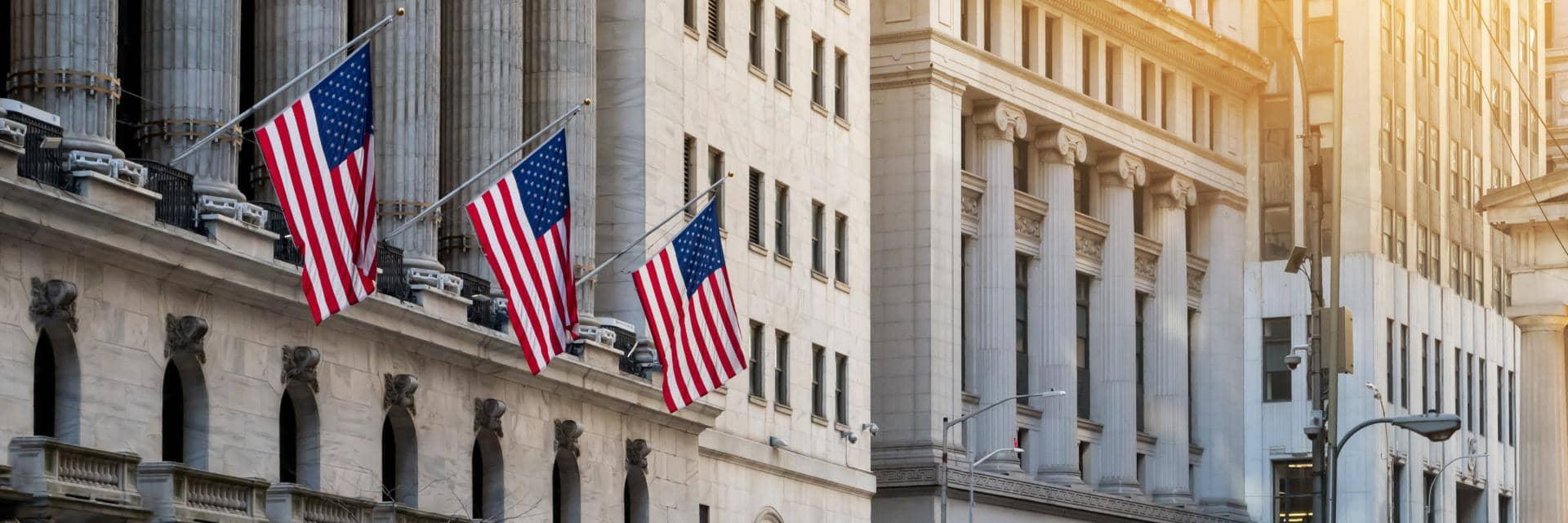
Is the US economy recession-proof?
13 November 2023
Please note: All data referenced in this article is sourced from Bloomberg unless otherwise stated, and is accurate at the time of publishing.
The US economy appears to have outperformed expectations in 2023, thanks to significant government spending and deep-pocketed consumers.
However, this economic resilience comes at a cost – with national debt ballooning to $33 trillion, up $3 trillion and counting this year alone, and $10 trillion since the start of the COVID-19 pandemic. And the latest figures suggest the US government is projected to run a budget deficit of more than 5% of GDP for the next decade1.
If this trend continues, the national debt could surpass $50 trillion by 2033 – and it’s possible (given the interest rate environment) that the US could be spending more on annual debt interest repayments by 2031 than on other major budget categories such as transportation, education and healthcare.
A real test for US ‘exceptionalism’
Without the US Federal Reserve (Fed) as a large, price-insensitive buyer of US government debt, and with foreign central banks looking to diversify away from US-linked assets, it appears that the US government can no longer afford to spend so freely.
This issue is also likely to dominate in the build-up to the 2024 US presidential election, as tensions around the debt ceiling and government funding will no doubt rise.
Despite the risks facing the US economy, there is still a widespread belief that US government bonds remain one of the world’s safest asset classes. Additionally, many American companies continue to dominate their respective industries, both in terms of global market share and profits. Corporate America is in good health.
And forecasted GDP growth – when put in a global context at least – further demonstrates the US economy’s enduring resilience. While Washington’s borrowing splurge is set to prop up growth in 2023 – real GDP growth is anticipated to come in at 2.9% this year– growth is then forecast to slow to just 0.9% in 2024. These numbers may be far from exciting, but it’s still better than the expected performance of many European economies.
Keeping the lid on interest rates?
Pandemic savings are also running out for many Americans, with a reduction in consumer spending expected in 2024. One possible consequence is that companies may have less room to raise prices, which could help to reduce inflation.
In addition, shelter costs – a major expense for most households and a significant driver of inflation – are expected to normalise into 2024, according to the Federal Reserve Bank of San Francisco2. This is another factor that could help bring domestic inflation below 3% over the next year, barring any major economic shocks.
If inflation does indeed fall back to nearer the US central bank’s 2% target, it would give the Fed some much-needed wriggle room – perhaps being able to consider cutting rates gradually in the second half of 2024. Of course, this is highly dependent on a soft economic landing and the unemployment rate staying in check.
But it does now seem unlikely that interest rates will rise significantly in the coming months, especially if the economy worsens.
Three major risks to the US economy
Three main risks to the US economy loom as we approach 2024. The first is the jobs market, which has remained incredibly tight in 2023 – despite signals of a pending recession. This is partly due to the strength of the domestic economy, as well as the effects of “labour hoarding”, with companies retaining staff for fear of not being able to hire them back when economic prospects improve.
Second is the housing market and the impact of higher interest rates. Outside of new builds, the housing market has been sluggish, as high mortgage rates and a desire to stay put have dampened buyer demand. While this can be sustainable in the short term, it does tend to limit job mobility and potential economic growth going forward – and eventually this is likely to equate to lower house prices.
The final major risk relates to the credit market – which is still digesting the surge in interest rates seen in the last 18 months. It’s unclear how hard the economy will be hit if yet-more companies default on loans, or if there’s a spike in credit card delinquency rates. However, it is likely credit measures will worsen in the coming months.
In summary
Uncertainty will once again weigh large on investors’ minds in 2024, and the health of the world’s most important economy will be heavily scrutinised. Even more so as the election campaigns ramp up.
For now, the US economy remains in good health and a recession has been kept at bay. The question is – can it last?